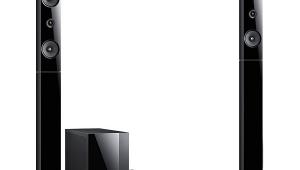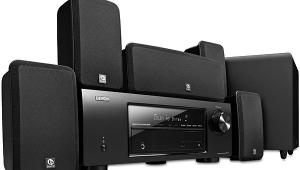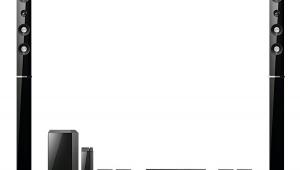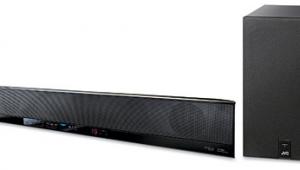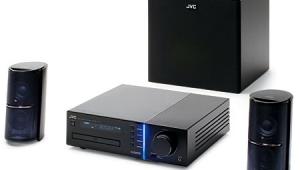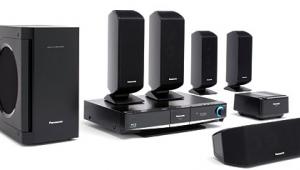I have owned a Geneva Labs ipod speaker for close to one year now. I have a medium sized ipod player with a compact disc (CD) player. This model sold for $699.
Consumers thinking about purchasing a Geneva Labs speaker should be aware of the hype and public relations promotions on the company’s behalf. It is just that – hype.
Here is an honest review from a real person.
Caveats –
[] The wood case that houses the speakers tends to overheat after about a half-hour’s use. When I eject my CD from the player, it feels very hot to the touch.
[] A cheap, plastic remote control is the only way to operate the speaker. Some models have a built in control device. Other models do not. Geneva Labs provides a remote control device that is flimsy, light-weight and because of its cheap manufacturing prone to breakage. Moreover, if you misplace the remote control, you will have no other way to operate your speaker.
[] Sound quality is good, but not as great as has been hyped. And the sound quality is not much better than ipod docks or speakers on the market today selling for half the price of the Geneva Labs speaker.
[] When using the models with CD player capabilities, be aware that the CD does not stop after the album has finished. It automatically restarts at the beginning. I left for work one morning and after 12 hours when I returned home, I discovered that the CD continued to play. Sure, I should have shut down my speaker before leaving for work; however, other CD and ipod players I currently own and have owned automatically shut down after all tracks on the album have played.
Buyer beware. This speaker and the remote control system will probably not last more than 18 months. In the final analysis, the Geneva Labs speakers are over hyped and over-priced. With comparable ipod stations on the market selling for roughly half the price of Geneva Labs speakers you will do better to think twice before laying down your hard earned cash for anything built by Geneva Labs.
Geneva Lab Model XL iPod/CD System
To say the Geneva Lab Model XL is merely the largest of the one-piece iPod-compatible speaker systems would be unjust. It is the wildest flight of fancy the iPod has inspired. Plugging your iPod into one is like boarding a 747—you get a distinct feeling that something more powerful than yourself is about to lift you into the air. I must note, however, that the XL looks, sounds, and smells better than any commercial aircraft I've been on.

The XL is a 2-foot-tall rectangular solid with a seven-layer piano lacquer finish that takes 18 hours to complete. It superficially resembles a subwoofer, right down to the single painted aluminum speaker grille on the front of the glossy fiberboard cabinet. Behind the grille, however, you'll find not one driver but six. They include pairs of tweeters, woofers, and subwoofers, with 100 watts of DSP-manipulated Class D amplification lurking behind each driver. Turn on a bright light and squat in an undignified position, and you can just about see them, along with the four ports. What you won't see are the four chambers that enclose the larger drivers, the kind of high-end construction that entails both forethought and expense.
Why this? Why now? It goes without saying that the iPod is driving growth in the audio industry. Now it's literally reshaping audio systems, moving up in scale from Logitech's mm50 portable speakers ($150), to Apple's own superb boom-box-sized Hi-Fi ($349), to Denon's S-301 HTIB ($1,599), to component powerhouses from the likes of Harman/Kardon, Onkyo, and Yamaha. The XL's footprint is almost identical to that of my Sanus home theater rack.
The XL doesn't have the surround capability or connectivity of a home theater system. Instead, it's carving out a new niche for itself as a no-fuss 2.1-channel device that produces a big, mellow sound and supports both background and foreground listening. It's voiced for humble MP3s, although, in an inspired show of versatility, Geneva has added a CD slot, an FM tuner, and two analog inputs, so you can plug in any stereo source you like.
Release the Monster
Uncrate the 84-pound monster, and what you'll see on top—beneath a lid and therefore protected from dust—are the iPod male docking connector and minijack. The latter is ideal for plugging in a non-iPod portable, and the XL's volume control affects this input. Also under the lid are a power on/off button, track plus/minus buttons, and a CD-eject key. The car-type CD slot is behind the lid and may collect dust. Soft, closely spaced fabric pads prevent dust from settling directly into the disc drive, though. On the bottom are one set of RCA-type stereo analog jacks, an FM antenna input, a power-cord connection, and a power switch.
If all you want to use is an iPod, connecting the power cord and docking the player takes seconds. It may take more time—and muscle—to figure out where you want the XL to live, but that is one of the joys of having one. Heavy as the unit is, I had no trouble flipping it on its side and pushing it around my heavily padded listening-room rug whenever the spirit moved me. If your home has tile floors or stairs, you may find yourself wishing for side handles.
In use, the XL leans heavily on its 23-key remote. A metal weight inside makes this chunky fellow feel more substantial. There are transport, source-select, shuffle, and six preset keys. Most useful to me were the up/down buttons for bass and treble. Centered at the 100-hertz and 6-kilohertz frequencies, they had a fairly narrow range of adjustment, but I was glad to have even a little control over the XL's formidable bass output. I fooled with treble less often—Geneva has adroitly voiced the product to minimize the awfulness of heavily compressed audio.
One notable omission—from this and most other iPod-compatible systems, barring the Denon—is a method of navigating the iPod menu structure. I usually start my listening by moving from artists on the main menu to album titles and occasionally to specific songs. To do this, I had to work the iPod's front panel while it was docked. Like virtually all manufacturers but Logitech, Geneva provides little in the way of a backing structure, so pressing the iPod's membrane keys stressed the docking connectors on both the system and the player—not fatally but enough to make me exercise care.
Playing CDs was easier. I just dropped the disc into the slot and slumped happily into an armchair. Two discs (out of dozens I played) made the drive rattle loudly, and one did not play at all. TDK and Maxell CD-Rs played fine.
The manufacturer notes that the XL has a very sophisticated damping system to minimize the impact of bass vibrations on the CD drive. The CD player module is housed inside a special aluminum protection box (to minimize air pressure), and this box itself hangs on a combined spring/foam floating suspension system.
Walking the Dogs
I've already described the XL's sound as big and mellow. The other word that immediately springs to mind is forgiving. Not only does it make the most of MP3s—it also aces bad digital audio in general. Having collected CDs since 1985, my shelves are groaning under great music butchered by crude, early digital mastering jobs. I'm not about to throw out my Rykodisc release of The Jimi Hendrix Experience Live at Winterland or my EMI box of Herbert von Karajan with the Berlin Philharmonic performing Schubert's Complete Symphonies. But the jewel boxes were dirty with disuse when I pulled them off the shelf and slid them, one by one, into the XL.
Everything got sweetened. And really, a little euphony is not a bad thing when you're playing mid-1980s digital. The XL couldn't quite coax a perfectly focused Berlin Philharmonic string sound from the 20-year-old EMI discs—because it wasn't there to begin with—but it did conjure up a dark, rich concert-hall sound with nicely sculpted reverb. Hendrix's left-handed Strat wizardry also benefited from the Geneva treatment. The more obvious charms of the Winterland recording—including feedback, single-coil-pickup hum, and the noises that valve amps make just before they expire—came through with much of their cheerfully chaotic magic.
 With tweeters spaced barely 1 inch apart, the XL didn't provide much stereo separation in my room, especially with my first (unprecedented and, well, bizarre) choice of placement. I put the XL directly in front of my rack, which sits on a long wall, and aimed the speaker diagonally toward an armchair on the adjacent wall. With the XL 6 feet from my seat, clutter to the left of it, open air to the right, and a recessed window behind my head, the system got little room reinforcement.
With tweeters spaced barely 1 inch apart, the XL didn't provide much stereo separation in my room, especially with my first (unprecedented and, well, bizarre) choice of placement. I put the XL directly in front of my rack, which sits on a long wall, and aimed the speaker diagonally toward an armchair on the adjacent wall. With the XL 6 feet from my seat, clutter to the left of it, open air to the right, and a recessed window behind my head, the system got little room reinforcement.
Untethered from room reflections, what it did muster all by itself was superb depth of field, with a soundstage that was narrow but also 2 or 3 feet deep. Still, I heard sounds coming from just behind the enclosure, just in front of it, and in between. For instance, on "Scentless Apprentice" from Nirvana's In Utero, Kurt Cobain's throat-shredding vocals seemed flush with the speaker grille, but the guitars seemed a couple of feet behind. On other recordings, individual parts of a drum kit varied in front-to-back positioning, although not enough to destroy the impression of a unified performance.
Stereo separation improved when I moved the XL in front of my desk, displacing my office chair, and allowed it to take off from the room's longest runway. With diffused but symmetrical wall reinforcement, the soundstage widened slightly. To give it the best possible chance, I put on Rubber Soul by the Beatles, which has the kind of clinical stereo separation popular in the mid-'60s. Guitars and voices moved about half a foot outward on each side of the cabinet. A traditional pair of stereo speakers would have made the mix more obvious, but I liked the XL's blended, organic feel.
Bass was strong in any position. The earlier nonsymmetrical room placement did nothing to inhibit the masterful groove of Donald Fagen's Morph the Cat. With symmetrical placement, Paul McCartney's Hofner bass on Rubber Soul was so assertive that I had to knock it down with the remote bass control.
Geneva Lab—which is based in Switzerland, as the name suggests—incorporates enhancement circuitry from Embracing Sound Experience (ESE), based in Stockholm, Sweden, into the XL and its smaller four-driver sibling, the Model L. ESE says the circuit provides improvements in frequency response and bass response. Geneva claims a 120-degree soundstage, and, in a room with barer walls and less clutter, I might have heard more of it. But I was totally satisfied with the XL's overall sound quality and musical experience. It competed effectively with my 5.1- and 2.1-channel reference systems.
Like Will Rogers, who is quoted as saying, "I never met a man I didn't like," the Model XL was compatible with literally every recording style and music format I threw at it. Geneva Lab has expanded the number of pleasure receptors an iPod can touch, while pushing form factor into uncharted territory. The XL has the hallmarks of true originality. Like the iPod itself, it may inspire imitators, but it will be devilishly hard to replicate.
Highlights
• Six drivers in one big cabinet
• Supports iPod, CD, FM, and analog stereo
• Forgiving, pleasant sound
- Log in or register to post comments


I understand the concerns, but today in 2025 I can say that the device still works wonderfully, even with the MiniJacks. I personally love the sound and the look.

I have the Geneva model XL in all pure white for a year right now. Absolutely adore it, it's totally awesome. The sound quality is fantastic and the build quality is stunning. It is not all rosy: the remote is too much plastic but works okay. My Logitech harmony universal remote also recognized the Geneva, I use this one on a daily base.
It's big, it's hefty, I just love my Jukebox.
British Hifi magazine Whathifi.com awarded the smaller Geneva Model M recently as Product of the Year 2011 for the
superb sound quality and excellent build and finish: http://www.whathifi.com/review/geneva-model-m
